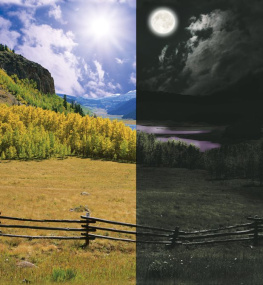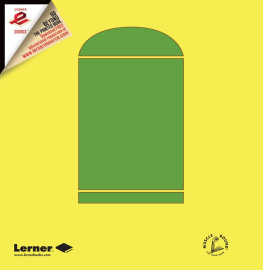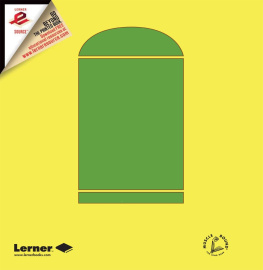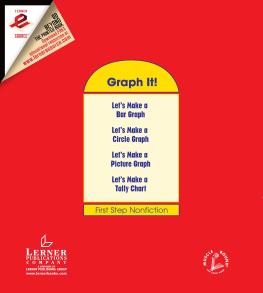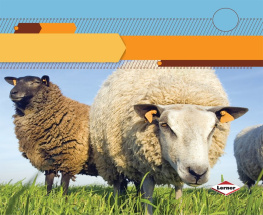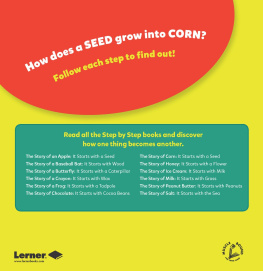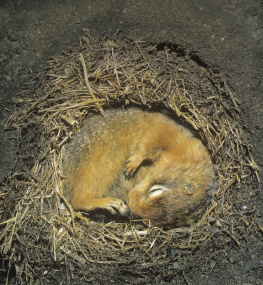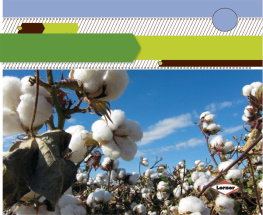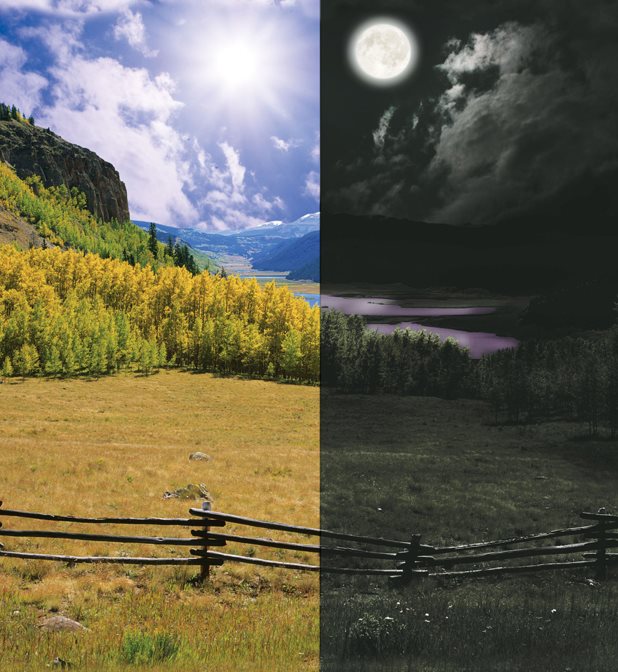Day and
Night
by Robin Nelson
Day follows night. Night
comes after day.
What makes this cycle of days and nights happen?
Earth spins in space.
In the morning, your part of Earth is turning to face the sun.
You see the first light from the sun at dawn.
The sun rises into the sky at
sunrise.
It is day.
You can see the sun and
clouds in the sky.
Earth keeps spinning.
In the evening, your part of
Earth is turning away from
the sun.
The sun moves lower in the
sky at sunset.
You can no longer see the
sun at dusk.
It is night.
You can see the moon and
stars in the sky.
Earth turns. The sun will come
up again in the morning.
The cycle goes on and on.
Day and Night
Sun
day
night
Earth
Learn More about Day and Night
Earth spins. It takes Earth
hours to spin around once.
During about half of those
hours, your side of Earth is
facing the sun, and it is day.
During the other half, your side
of Earth is facing away from
the sun, and it is night.
Day and Night Facts
It takes hours for Earth to spin around one time. This is one day.
The sun always rises in the east.
In the morning, as Earth spins, the sun rises higher in the sky.
At midday, the sun is highest in the sky.
In the afternoon, as Earth spins, the sun sinks lower in the sky.
The sun always goes down in the west.
When it is day, it is night on the other side of Earth.
Glossary
cycle something that happens over and over again over time
dawn the time of day when the sun first can be seen
dusk the time of day after the sun can no longer be seen
sunrise when the sun rises in the sky
sunset when the sun moves lower in the sky
Index
Earth , evening moon morning stars sun ,
Copyright 2011 by Lerner Publishing Group, Inc. All rights reserved.
International copyright secured. No part of this book may be reproduced, stored in a retrieval system, or transmitted in any form or by any meanselectronic, mechanical, photocopying, recording, or otherwisewithout the prior written permission of Lerner Publishing Group, Inc., except for the inclusion of brief quotations in an acknowledged review. The images in this book are used with the permission of: Galyna Andrushko/Dreamstime.com, p. 2; Zheng Dong/Dreamstime.com, pp. 3, 22 (top); NASA/JSC, p. 5; Ashley Whitworth/Dreamstime.com, pp. 6, 22 (second from top); Abjeff/Dreamstime .com, pp. 7, 22 (second from bottom); age fotostock/SuperStock, p. 8; Carlos Caetano/ Dreamstime.com, p. 9; Antonio M. 9; Antonio M.
Rosario/Iconica/Getty Images, p. 10; Stephen Finn/ Dreamstime.com, p. 11; Titania1980/Dreamstime.com, p. 12; Darrin Klimek/Taxi/Getty Images, pp. 13, 14, 22 (middle); J. 15; Julia Shepeleva/Dreamstime .com, p. 16; Suzanne Tucker/Dreamstime.com, p. 17; Laura Westlund/Independent Picture Service, p. 18; Uguntina/Shutterstock Images, p. 22 (bottom). 22 (bottom).
Front cover: Dmitriy Gool/Dreamstime.com Lerner Publications Company A division of Lerner Publishing Group, Inc. 241 First Avenue North Minneapolis, MN 55401 U.S.A. Website address: www.lernerbooks.com Library of Congress Cataloging-in-Publication Data Nelson, Robin, 1971 Day and night / by Robin Nelson. p. cm. (First step nonfiction.
Discovering natures cycles) Includes index. ISBN 9780761345763 (lib. bdg. : alk. paper) 1. 2. 2.
DayJuvenile literature. I. Title. QB633.N45 2011 525'.35dc22 2009020613 Manufactured in the United States of America 1 DP 7/15/10

